🤓 The 2026 Local Search Ranking Factors are here!! Check out the report!
🤓 The 2026 Local Search Ranking Factors are here!! Check out the report!

We recently hosted our first Local Search Summit and for the event we studied 800,000 Google My Business listings across 70 categories in 100 major cities in the U.S. and in Canada. In this study, we looked at four core features of Google My Business:
The purpose of this study is to understand Google My Business feature adoption and trends, to identify ways you can stand out and find the best opportunities for your business.
We are sharing the full presentation from the event and access to all of the data to use for your own research and analysis.
Get full access to our Local Search Summit content with our video bundle. Deepen your knowledge and learn new tactics and strategies to improve your rankings and conversions from local search. As bonus when you purchase the bundle you will also unlock all of the content from our 2020 event!
Having your business on Google My Business plays an important part in how users find your business online. By optimizing your business profile, you can both help customers find your business and convert more searchers into loyal customers.
Google Posts are one of the newest features and biggest changes to GMB. They were released in beta in the spring of 2016. There are a few different types of Google Posts, including What’s new, Events, Offers, and COVID-19 updates. You can learn everything you need to know about Google My Business Posts here!
In our study, we found that Google Post adoption is low.
Only 28% of businesses we studied had ever posted. The number of businesses actively publishing Google Posts at the time of study, was 7 times less – just 4% of businesses are making Google Posts a part of their ongoing strategy.
With 96% of businesses not using the Google Posts feature, you can make your business can really stand out from the competition with regular, targeted Google Posts.
When it comes to the value of Google Posts, we’re talking about user engagement not ranking boost. Google Posts are valuable to businesses because when used effectively they’re low-cost, low-commitment lead generators.
Google Posts = Free Ad Space on Google
Businesses need to stop thinking of Google Posts like social media posts and consider them as free ad space on Google! With Google Posts, you can feature your products or services, add multiple images including images with text content and even short videos to advertise your business.
Google Posts are Low Cost Lead Generators
What is one lead worth to your business? With that figure in mind, consider testing weekly Google Posts that promote your top service or product with UTM tracking so you can attribute any leads to Posts. You can even offer a special offer exclusively through Google Posts to track offline conversions. With a couple weeks of Posts under your belt, you’ll be able to evaluate the cost of publishing the Posts against the value of one lead to determine if Google Posts are driving business and closing deals for you.
Google Posts Help Your Business Stand Out, Even if You’re Not Ranking #1
Below, we compared two businesses in the local finder for the search term “drain cleaning Edmonton”. On the left is the top ranking business, on the right is another business that ranked fourth for our query. 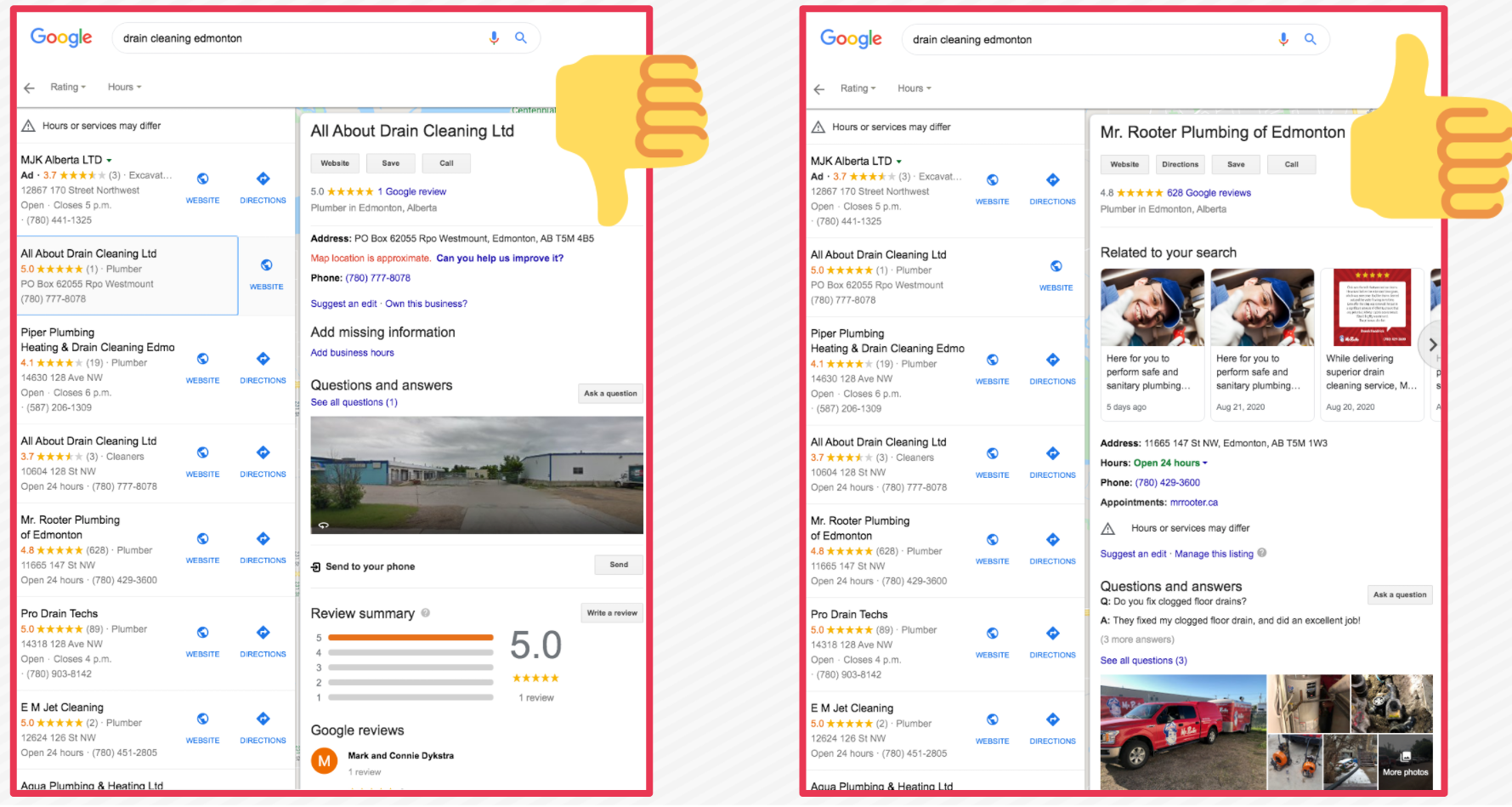 The top ranking business is getting major ranking benefits from our search term “drain cleaning” being included in their business name “All About Drain Cleaning Ltd.” When we look at the listing though, there’s only one review, there’s a warning message that Google isn’t even sure about the location, it isn’t claimed, and it’s missing basic business information.
The top ranking business is getting major ranking benefits from our search term “drain cleaning” being included in their business name “All About Drain Cleaning Ltd.” When we look at the listing though, there’s only one review, there’s a warning message that Google isn’t even sure about the location, it isn’t claimed, and it’s missing basic business information.
The business ranking #4 has over 600 reviews, a high star rating, it’s owned and optimized and any searcher can see that this business cares – they answer questions, post information and promote with Posts (seen in the carousel titled “Related to your Search”).
As a consumer who is going to hire this service area business to come into your home, which business do you trust more and are more likely to call? A fully optimized listing with Google Posts focused on the services your customers are searching for can help your business stand out against the competition!
Now let’s look at the businesses that are most and least likely to use Google Posts. Most Likely to Publish Google Posts
The above categories had the highest percentage of businesses who had ever posted (includes businesses with at least one post since the feature was released) in our study.
On average only 10% of these businesses have active posts.
If your business is in one of these top categories, you need to know that top ranking competitors have been testing Google Posts and it’s time you started to.
Least Likely to Publish Google Posts
The above categories had the lowest percentage of businesses who had ever posted (includes businesses with at least one post since the feature was released) in our study.
If your business fits in one of the categories least likely to publish Google Posts, less than 1% of your competitors have active Posts.
Some of these categories may have restrictions around promotional language, patient confidentiality, or just be in a strictly B2B market. That doesn’t mean you can’t use the Posts feature! Google Posts can be used to build trust (i.e. profile a staff member or highlight an award) and we always recommend using Posts to simply share a link to book an appointment or call your business.
And remember only 4% of all businesses studied are actively posting so the opportunity isn’t only for these businesses, Google Posts are truly a competitive difference maker for every business.
Did you know that Whitespark can help you manage all of these GMB features plus spam fight for your business? Our Google My Business experts will help you convert searchers to customers through our monthly management service.
Released in August 2017, the Questions & Answers feature allows businesses to engage with customers and offer frequently asked question content directly in the business profile.
This feature oddly isn’t accessible from the GMB dashboard. As the business owner, you can access Q&A from your business listing on your branded search results page. From here, you can answer questions as the business and post a frequently asked question and answer. 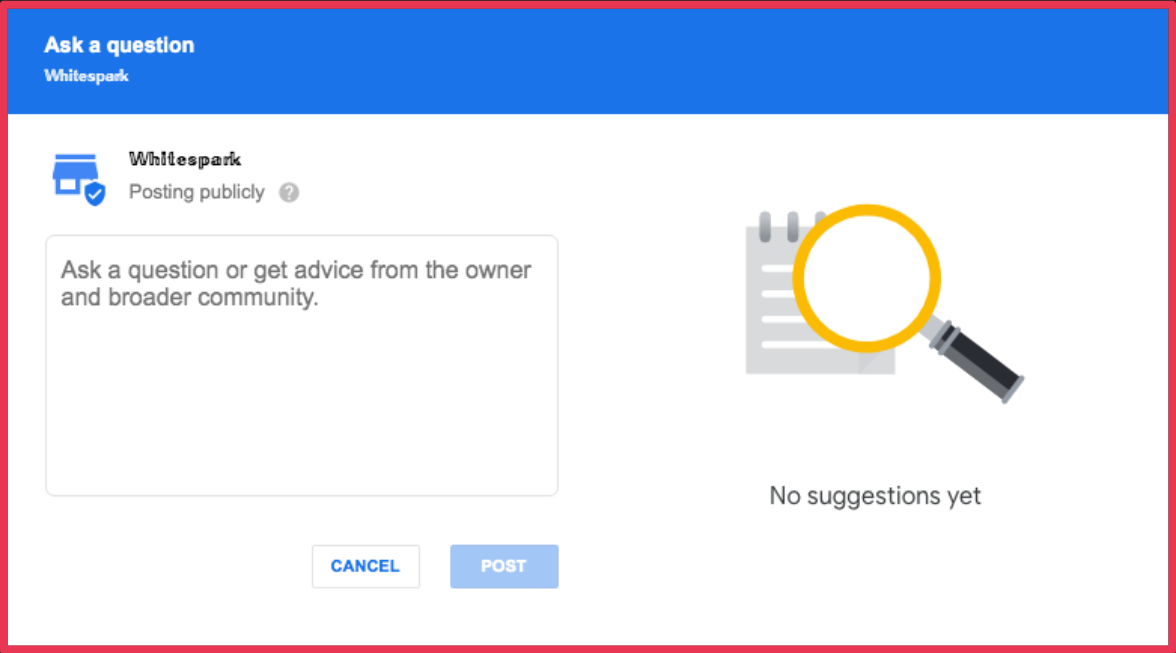 You can also upvote questions and answers. The question with the most upvotes will be the top question (and three upvotes will promote a question to the business profile). If there are multiple answers to a question, the answer with the most upvotes will be the top answer.
You can also upvote questions and answers. The question with the most upvotes will be the top question (and three upvotes will promote a question to the business profile). If there are multiple answers to a question, the answer with the most upvotes will be the top answer.
Google will *sometimes* alert the business owner to new Q&A. It’s best to use a tool that monitors Q&A. 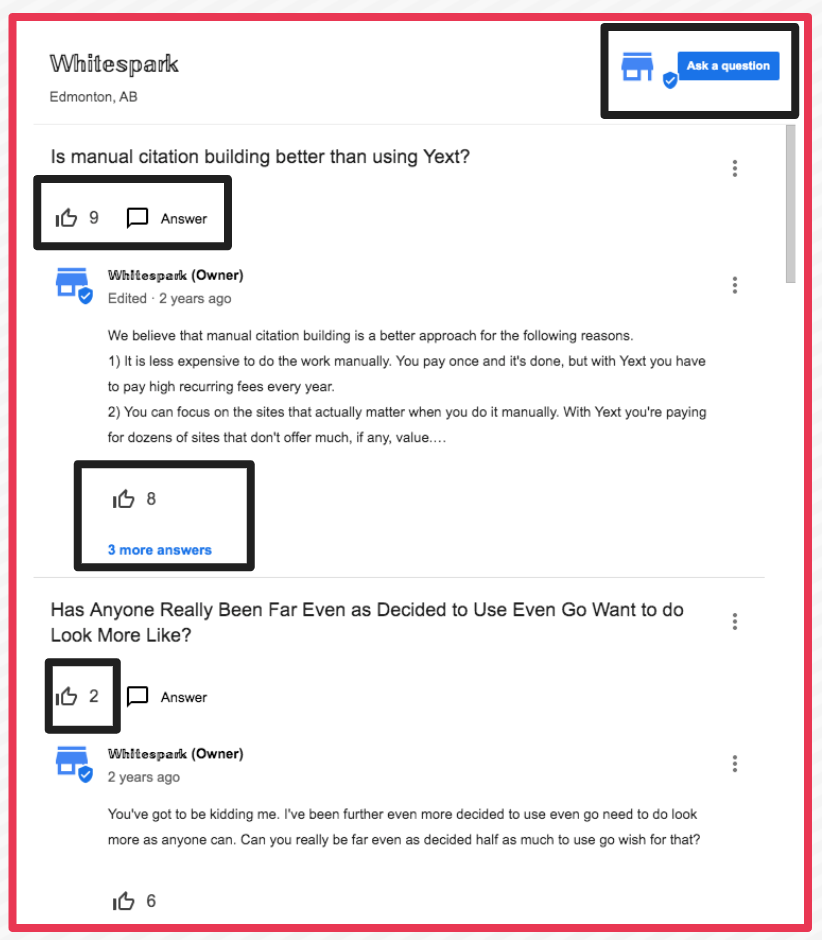
In our study, we found that 30% of businesses have Q&A on their business listing. There are two things to consider here:
Google My Business Q&A is about managing your reputation, just like Google Reviews. Businesses need to keep in mind that anyone can ask a Question and anyone can answer that question. All Google Maps users can use the Questions & Answers feature so it’s critical to monitor and manage. 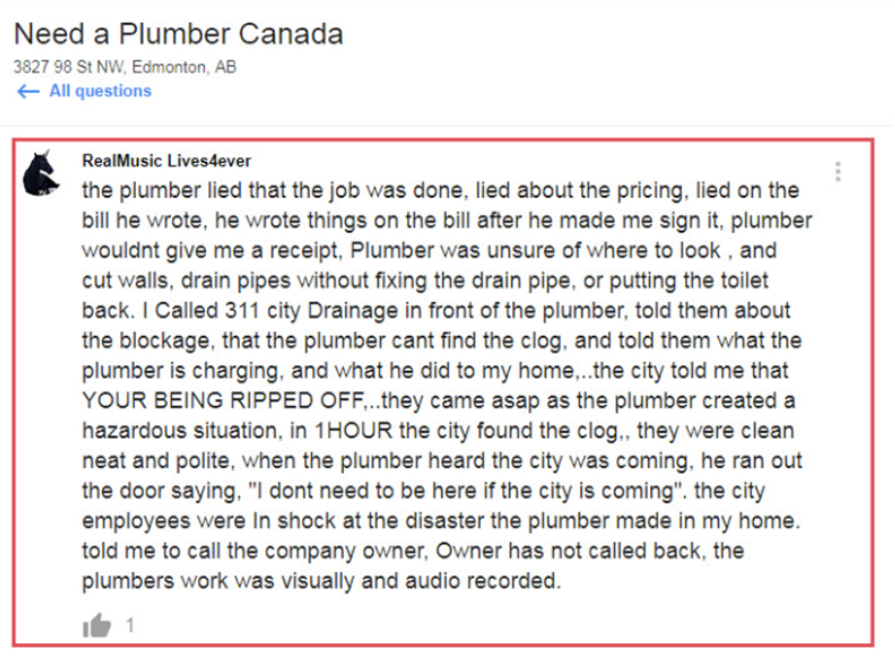 Don’t let just anyone be your PR person
Don’t let just anyone be your PR person
Not managing your Q&A means you’re letting other Google Maps users answer questions on behalf of your business. From the business listings we reviewed, user-provided answers often:
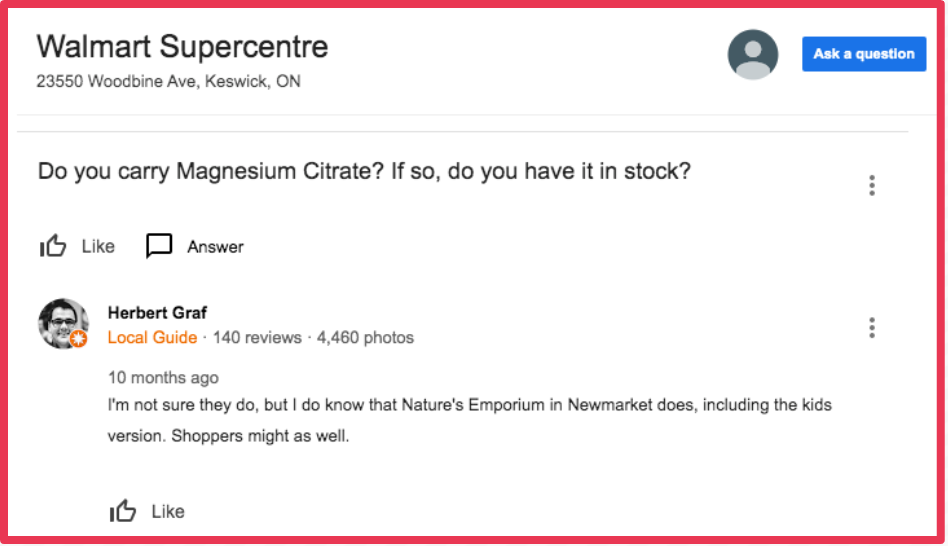
Stop losing customers to your competitors – manage your Q&A. We found that these businesses were the most and least likely to use Questions & Answers.
Most Likely to Have Q&A
There are some businesses that naturally lend themselves more to this feature, and those most likely to have Q&A are:
If your business is in one of these top categories, make sure you check for user-generated questions and answers and add your top Q&A. It’s very likely you have questions that have not been managed and that means you’re leaving customers annoyed and leaving money on the table.
Least Likely to Have Q&A
The businesses we found least likely to have Q&A are:
Consider using this space to answer top objections customers have with completing a transaction with your business. 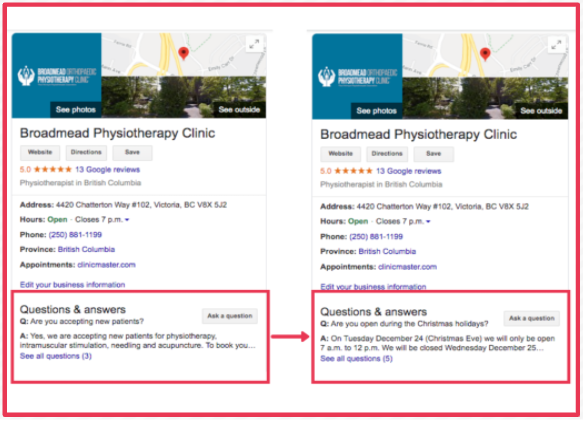
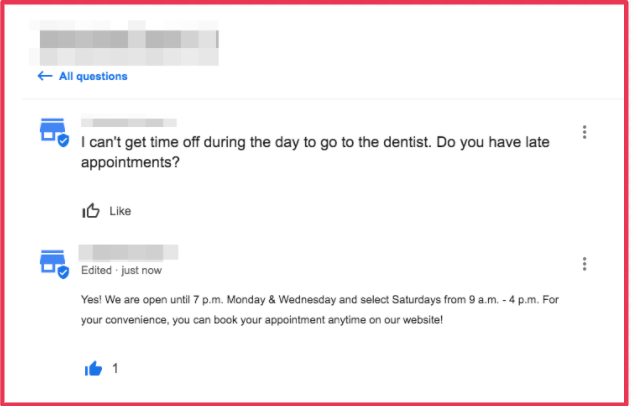
Products rolled out in October 2018 and enables businesses to post their inventory directly on GMB, creating an online catalog for customers to browse, complete with descriptions, pricing and link options.
Products have a high position in the business profile on the branded results page – above Q&A, reviews and Posts – and generally above the fold. If you’re a service-based business, you can currently use this feature to promote services. Products allow you to showcase your Products and Services like you have in the past with the Photo feature but now you can categorize, add titles and descriptions and UTM tagged links with call to action options. The business phone number is displayed in the top right hand on desktop and mobile as well.
Much like Posts, you can think of Products as free ad listing space in your business profile, and above the fold to boot. 
In our study, we found that on average, only 4% of businesses have Products listed on their GMB listing.
But the feature is not available to all businesses (even sometimes within the same category), which Google is aware of but it seems there’s no solution in sight.
Businesses Most Likely to Add Products
Business Least Likely to Add Products
Pretty much every other category.
Every category we studied (that had the Products feature available) had at least one businesses using this feature.
If the Products feature is available to you – use it! This section is very visual and in a high position in the business profile.
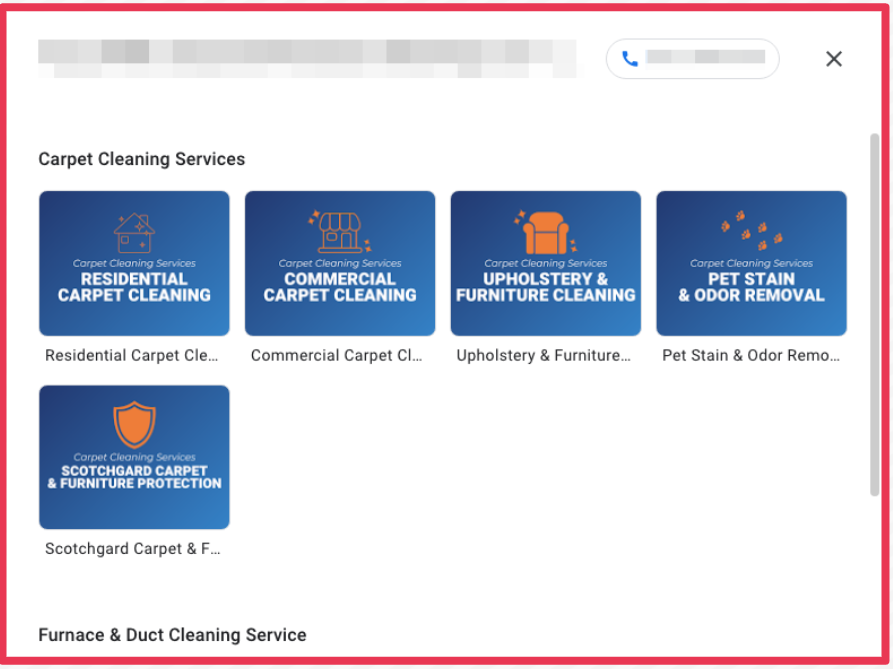
![]()
Google Reviews are a cornerstone and one of the most well-known features of GMB. Reviews are a local ranking factor for businesses in Google Maps, the local finder and the coveted map pack on Search results pages.
There are some new features that have rolled out over the past year, including Review Attributes (spring 2020) and Place Topics (July 2019). Some businesses even have the new feature below, which asks the reviewer questions including what service they’re rating. 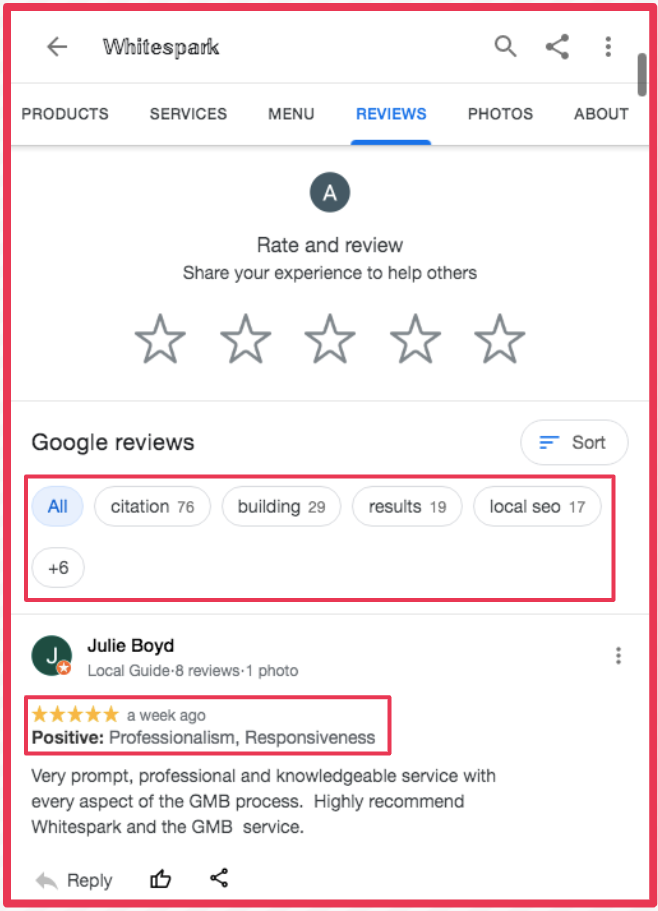
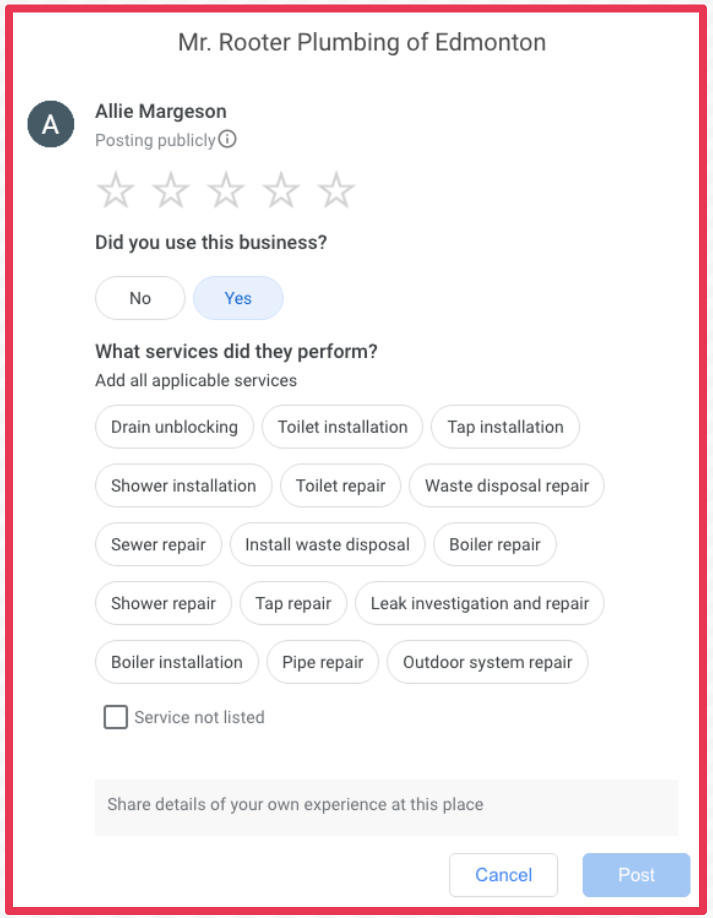
In our data set, only 49% of businesses are claimed.
Unclaimed listings are on average 3x more likely to have no reviews or low ratings. If for no other reason than this, it is vital that businesses claim their business profile on Google My Business.
We did see some trends and outliers when studying the connection between listing ownership and reviews and ratings.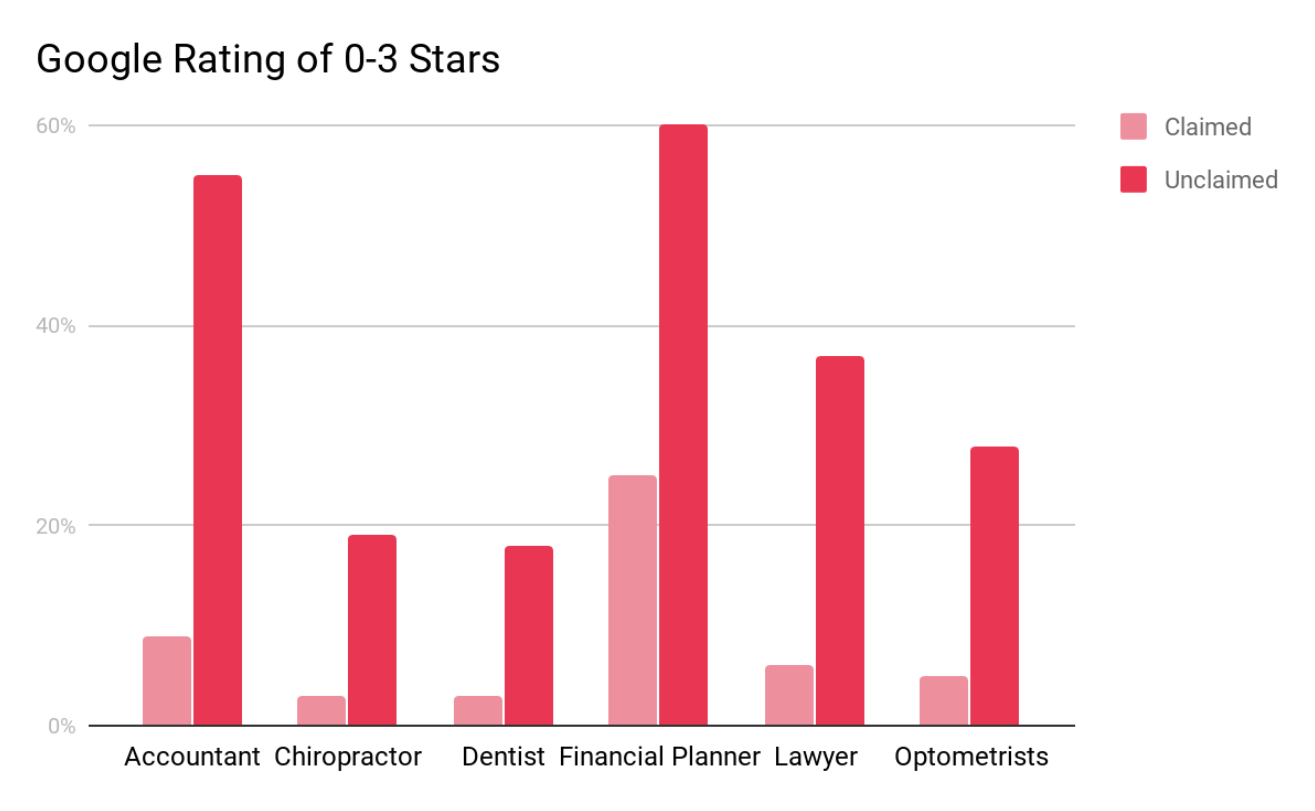 Google defines an individual practitioner as “a public-facing professional, typically with their own customer base.” We found that many professionals that fit this classification were much more at risk of having no to low reviews associated with not claiming their GMB listing.
Google defines an individual practitioner as “a public-facing professional, typically with their own customer base.” We found that many professionals that fit this classification were much more at risk of having no to low reviews associated with not claiming their GMB listing.
Accountants, chiropractors, dentists, financial planners, lawyers and optometrists were about 6x more likely to have no to low reviews if the listing was unclaimed.
For these professionals, a simple and effective review strategy is paramount. Practitioner listings should be claimed and owned by that individual, not their practice.
While claimed listings are generally less likely to have no reviews or low ratings, the restaurants & coffee shop categories are exceptions. These businesses are very unlikely to have 0-3 star ratings (less than 4% of listings we studied) and there’s virtually no difference (a single percentage point) between claimed and unclaimed listings’ ratings. This is likely because in American & Canadian culture (the two countries in the study), leaving reviews is a common part of the dine-out experience. We know that in general, consumers write reviews when they’re very satisfied or very unsatisfied.
We know that in general, consumers write reviews when they’re very satisfied or very unsatisfied.
But the majority of businesses have less than 10 reviews. 62% of the businesses we studied have 0 to 10 reviews, only 11% had more than 100 reviews.
There are some businesses that are excelling at accumulating reviews, including: Coffee Shops, Bakeries, Car Dealers, Electronics Stores and Restaurants. In fact, Restaurants run opposite to the trend of all businesses for average review count – as we’ve already explored, very few have low review counts and 77% have over 100 reviews. 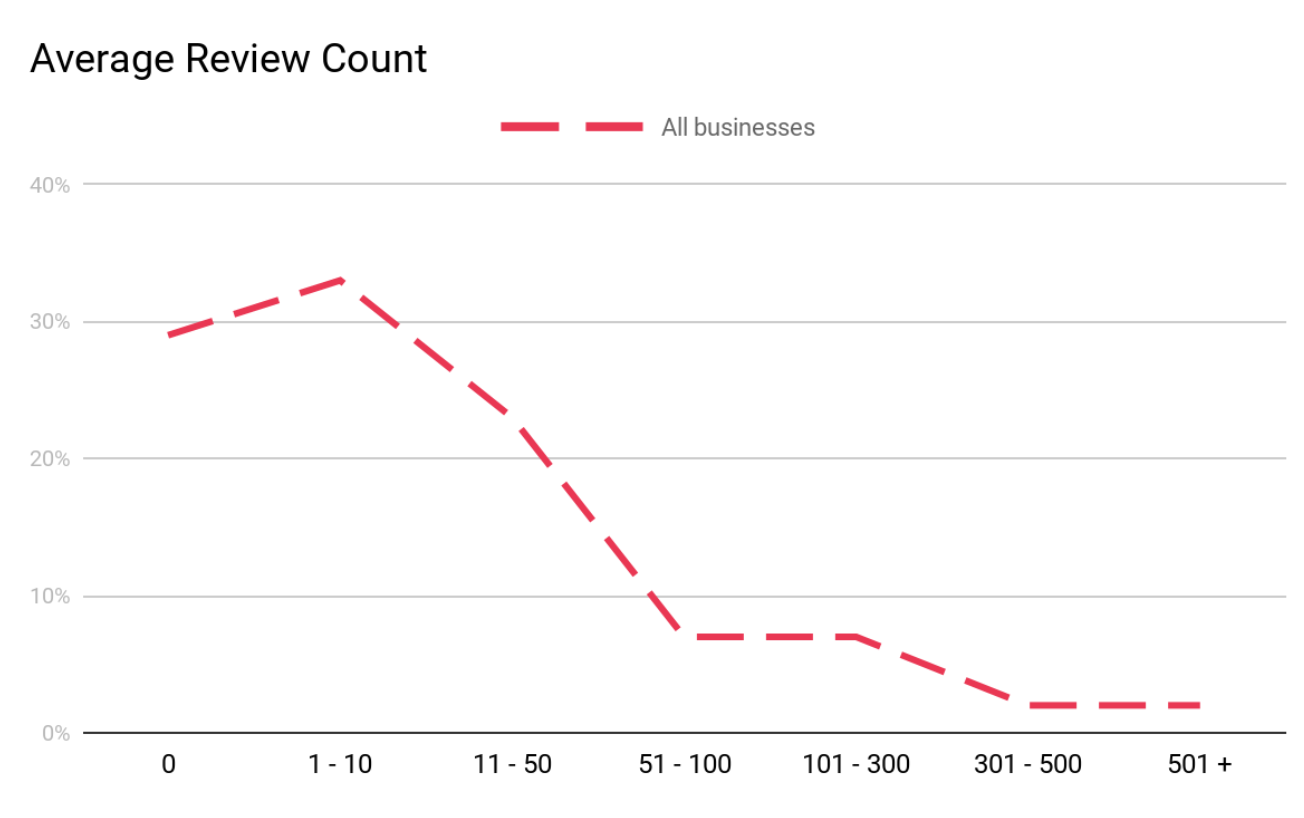
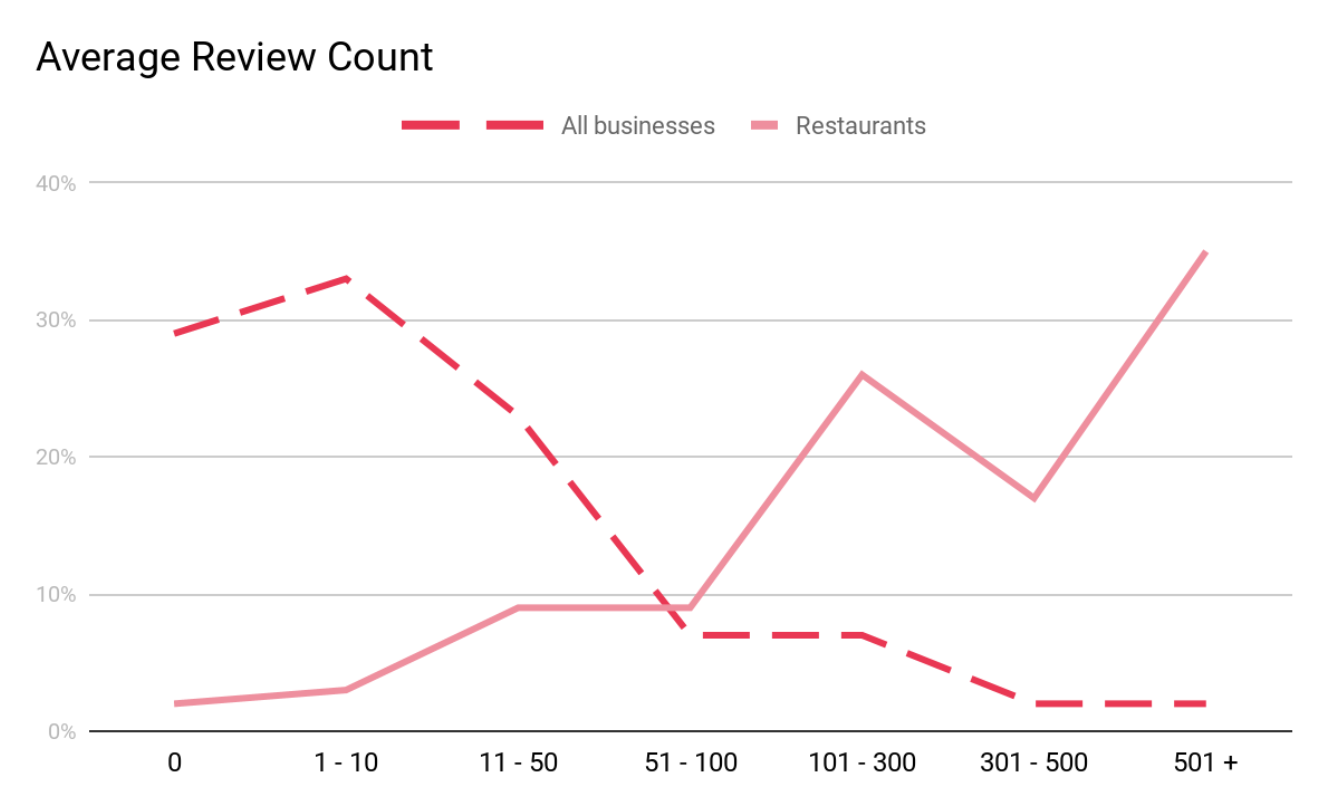 Who’s winning with reviews?
Who’s winning with reviews?
Fewest Low Reviews
We measured which businesses are best at collecting reviews as those least likely to have no reviews. Very few locksmiths, day spas, bakeries and coffee shops have no reviews and only 2% of restaurants studied did not have at least one review.
Who’s losing with reviews?
When it comes to winning at reviews, you can keep it simple and be successful. We recommend that after personally asking clients to leave you a review, share a review request card with a link and QR code for your Google review page. Show your client that all they have to do is aim their smartphone camera at the QR code to open the page to review your business. Make it as easy as possible for clients – with fewer barriers, they’re more likely to follow through with a review. For our review links, we like to use the GMB short name (from the GMB Info section of the dashboard), just add /review to your g.page/shortname link.
This HVAC business had 64 reviews and a 4.4 star rating in January 2019. A year later in January 2020, they had increased their star rating to 4.7 stars but only had gained 13 reviews over an entire year. That month they implemented our review strategy.
In just one month, their review count jumped up by 27 to 104 reviews. A few months later, their review count is now over 200 and they have maintained their 4.7-star rating.  Reviews are a conversion tool and sometimes they tell you that themselves! The review below tells us that the client read all the positive reviews and that’s why they chose this business.
Reviews are a conversion tool and sometimes they tell you that themselves! The review below tells us that the client read all the positive reviews and that’s why they chose this business. 
Our study data is publicly available to use for your own business through our GMB Explorer tool.🎉
We realized there were many applications for this data if it could be searched and segmented, including Competitive Analysis, Prospecting for Clients and Spam Fighting.
Looking to analyze your competitors? You can sort the data to see which of your competitors are killing it. You can sort by businesses showing ads, or businesses that meet a review threshold for example and more! 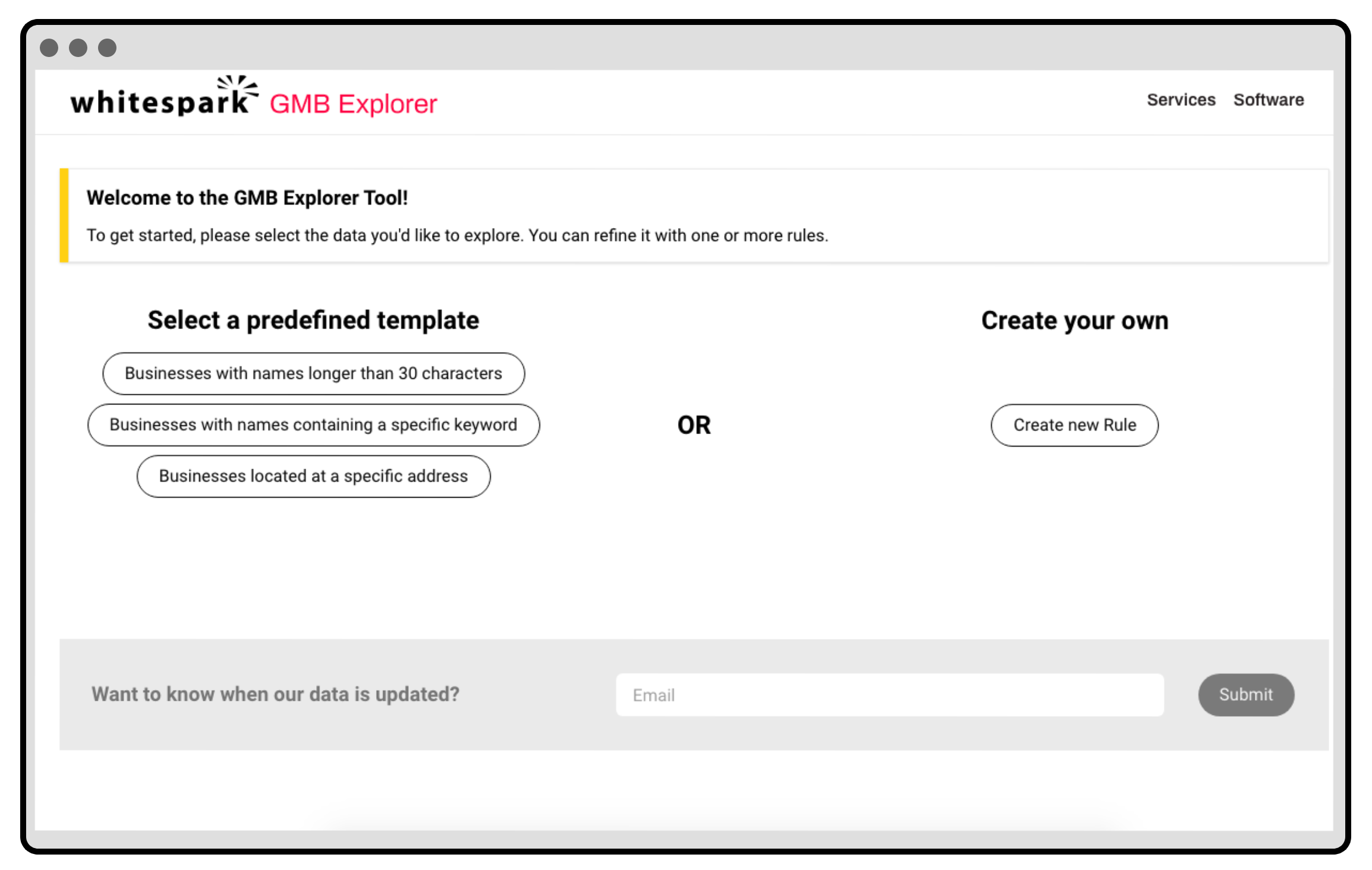 Are you surprised by the low adoptions of features in Google My Business? If you aren’t already in the know of what your top local competitors are doing in GMB, go do some research, and then put a plan in place to start dominating in local search. If you need any help with your strategy and management, we have an amazing team of experts that you can collaborate with to meet your business goals.
Are you surprised by the low adoptions of features in Google My Business? If you aren’t already in the know of what your top local competitors are doing in GMB, go do some research, and then put a plan in place to start dominating in local search. If you need any help with your strategy and management, we have an amazing team of experts that you can collaborate with to meet your business goals.


Whitespark provides powerful software and expert services to help businesses and agencies drive more leads through local search.
Founded in 2005 in Edmonton, Alberta, Canada, we initially offered web design and SEO services to local businesses. While we still work closely with many clients locally, we have successfully grown over the past 20 years to support over 100,000 enterprises, agencies, and small businesses globally with our cutting-edge software and services.